Enhanced Single-Sided Ventilation with Overhang in Buildings
Abstract
:1. Introduction
2. Numerical Methods
2.1. Computational Geometry
2.2. Boundary Conditions
2.3. Numerical Procedure
2.4. Numerical Validations
3. Results and Discussion
3.1. Effect of Overhang on Ventilation Rates
- for the windward direction,
- for the leeward direction,
- for the side direction.
3.2. Changes to Flow Fields due to Overhang
3.3. Effect of Overhang on Local Mean Age of Air
4. Conclusions
Acknowledgments
Author Contributions
Conflicts of Interest
References
- Linden, P.F. The fluid mechanics of natural ventilation. Ann. Rev. Fluid Mech. 1999, 31, 201–238. [Google Scholar] [CrossRef]
- Jiang, Y.; Alexander, D.; Jenkins, H.; Arthur, R.; Chen, Q. Natural ventilation in buildings: Measurement in a wind tunnel and numerical simulation with large-eddy simulation. J. Wind Eng. Ind. Aerodyn. 2003, 91, 331–353. [Google Scholar] [CrossRef]
- Khan, N.; Su, Y.; Riffat, S.B. A review on wind driven ventilation techniques. Energy Build. 2008, 40, 1586–1604. [Google Scholar] [CrossRef]
- Nikas, K.S.; Nikolopoulos, N.; Nikolopoulos, A. Numerical study of a naturally cross-ventilated building. Energy Build. 2010, 42, 422–434. [Google Scholar] [CrossRef]
- Kindangen, J. Window and roof configurations for comfort ventilation. Build. Res. Inf. 1997, 25, 218–225. [Google Scholar] [CrossRef]
- Kindangen, J.; Krauss, G.; Depecker, P. Effects of roof shapes on wind-induced air motion inside buildings. Build. Environ. 1997, 32, 1–11. [Google Scholar] [CrossRef]
- Chand, I.; Bhargava, P.K.; Krishak, N.L.V. Effect of balconies on ventilation inducing aeromotive force on low-rise buildings. Build. Environ. 1998, 33, 385–396. [Google Scholar] [CrossRef]
- Mak, C.M.; Niu, J.L.; Lee, C.T.; Chen, K.F. A numerical simulation of wing walls using computational fluid dynamics. Energy Build. 2007, 39, 995–1002. [Google Scholar] [CrossRef]
- Montazeri, H.; Azizian, R. Experimental study on natural ventilation performance of one-sided wind catcher. Build. Environ. 2011, 43, 2193–2202. [Google Scholar] [CrossRef]
- Ai, Z.T.; Mak, C.M.; Niu, J.L.; Li, Z.R.; Zhou, Q. The effect of balconies on ventilation performance of low-rise buildings. Indoor Built. Environ. 2011, 20, 649–660. [Google Scholar] [CrossRef]
- Ai, Z.T.; Mak, C.M.; Niu, J.L.; Li, Z.R. The assessment of the performance of balconies using computational fluid dynamics. Build. Serv. Eng. Res. Technol. 2011, 32, 229–243. [Google Scholar] [CrossRef]
- Karava, P.; Stathopoulos, T.; Athienitis, A.K. Airflow assessment in cross-ventilated buildings with operable façade elements. Build. Environ. 2011, 46, 266–279. [Google Scholar] [CrossRef]
- Blocken, B.; Van Hooff, T.; Aanen, L.; Bronsema, B. Computational analysis of the performance of a venturi-shaped roof for natural ventilation: Venturi-effect versus wind-blocking effect. Comput. Fluids 2011, 48, 202–213. [Google Scholar] [CrossRef]
- Montazeri, H. Experimental and numerical study on natural ventilation performance of various multi-opening wind catchers. Build. Environ. 2011, 46, 370–378. [Google Scholar] [CrossRef]
- Montazeri, H.; Montazeri, F.; Azizian, R.; Mostafavi, S. Two-sided wind catcher performance evaluation using experimental, numerical and analytical modeling. Renew. Energy 2010, 35, 1424–1435. [Google Scholar] [CrossRef]
- Ghadiri, M.H.; Lukman, N.; Ibrahim, N.; Mohamed, M.F. Computational analysis of wind-driven natural ventilation in a two sided rectangular wind catcher. Int. J. Vent. 2013, 12, 51–62. [Google Scholar]
- Prajongsan, P.; Sharples, S. Enhancing natural ventilation, thermal comfort and energy savings in high-rise residential buildings in Bangkok through the use of ventilation shafts. Build. Environ. 2012, 10, 142–149. [Google Scholar] [CrossRef]
- Montazeri, H.; Blocken, B. CFD simulation of wind-induced pressure coefficients on buildings with and without balconies: Validation and sensitivity analysis. Build. Environ. 2013, 60, 137–149. [Google Scholar] [CrossRef]
- Perén, J.I.; Van Hooff, T.; Leite, B.C.C.; Blocken, B. CFD analysis of cross-ventilation of a generic isolated building with asymmetric opening positions: Impact of roof angle and opening location. Build. Environ. 2015, 85, 263–276. [Google Scholar] [CrossRef]
- Perén, J.I.; Van Hooff, T.; Ramponi, R.; Blocken, B.; Leite, B.C.C. Impact of roof geometry of an isolated leeward sawtooth roof building on cross-ventilation: Straight, concave, hybrid or convex? J. Wind Eng. Ind. Aerodyn. 2015, 20, 102–114. [Google Scholar] [CrossRef]
- Perén, J.I.; Van Hooff, T.; Leite, B.C.C.; Blocken, B. Impact of eaves on cross-ventilation of a generic isolated leeward sawtooth roof building: Windward eaves, leeward eaves and eaves inclination. Build. Environ. 2015, 92, 578–590. [Google Scholar] [CrossRef]
- Raeissi, S.; Taheri, M. Optimum overhang dimensions for energy saving. Build. Environ. 1998, 33, 293–302. [Google Scholar] [CrossRef]
- Evola, G.; Popov, V. Computational analysis of wind driven natural ventilation in buildings. Energy Build. 2006, 38, 491–501. [Google Scholar] [CrossRef]
- CD-Adapco. STAR-CCM++ Version 7.04 User Guide; CD-Adapco: New York, NY, USA, 2012. [Google Scholar]
- Meroney, R.N. CFD prediction of airflow in buildings for natural ventilation. In Proceedings of the 11th Americas Conference on Wind Engineering, San Juan, Puerto Rico, 22–26 June 2009; pp. 1–11.
- Ramponi, R.; Blocken, B. CFD simulation of cross-ventilation for a generic isolated building: Impact of computational parameters. Build. Environ. 2012, 53, 34–48. [Google Scholar] [CrossRef]
- Menter, F.R. Two-equation eddy-viscosity turbulence models for engineering applications. AIAA J. 1994, 32, 1598–1605. [Google Scholar] [CrossRef]
- Ai, Z.T.; Mak, C.M. CFD simulation of flow and dispersion around an isolated building: Effect of inhomogeneous ABL and near-wall treatment. Atmos. Environ. 2013, 77, 568–578. [Google Scholar] [CrossRef]
- Warren, P.; Parkins, L. Single-sided ventilation through open windows. ASHRAE J. 1985, 49, 209–228. [Google Scholar]
- Cabral, B.; Leedom, L. Imaging vector fields using line integral convolution. In Proceedings of the ACM SIGGRAPH 93 Conference on Computer Graphics and Interactive Techniques, New York, NY, USA, 2–6 August 1993.
- Bartak, M.; Beausoleil-Morrison, I.; Clarke, J.; Denev, J.; Drkal, F.; Lain, M.; Macdonald, I.A.; Melikov, A.; Popiolek, Z.; Stankov, P. Integrating CFD and building simulation. Build. Environ. 2002, 37, 865–871. [Google Scholar] [CrossRef]
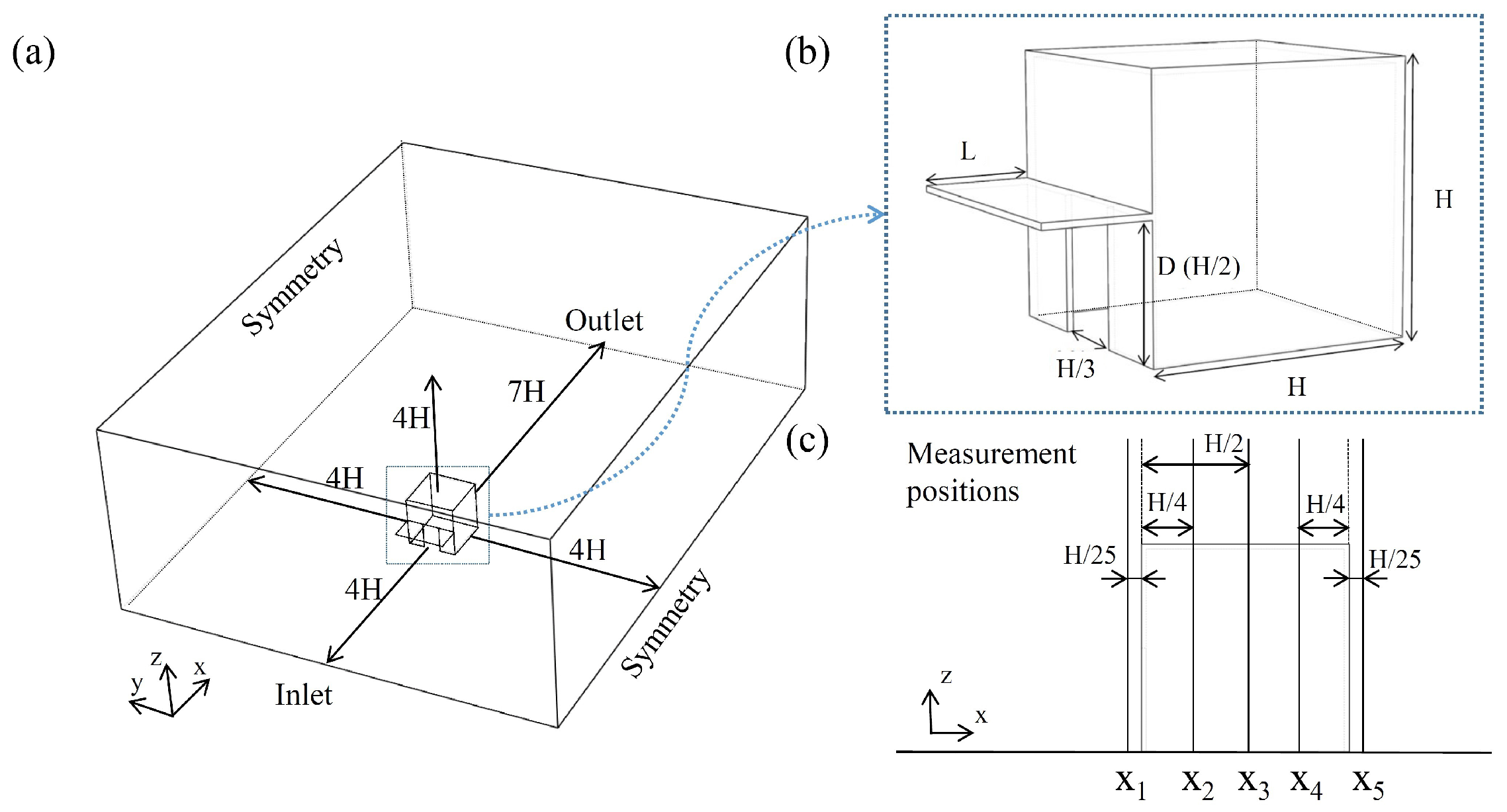

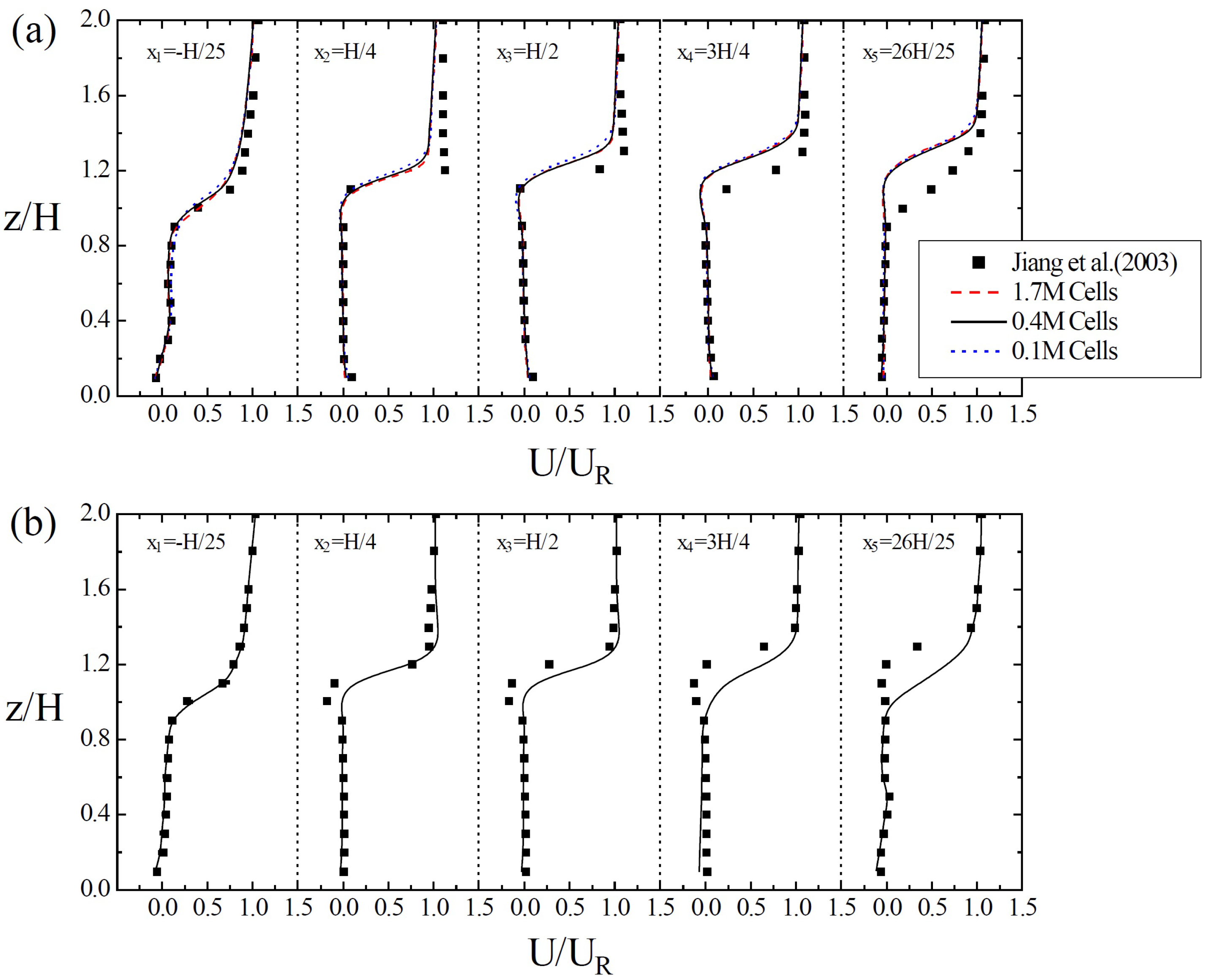
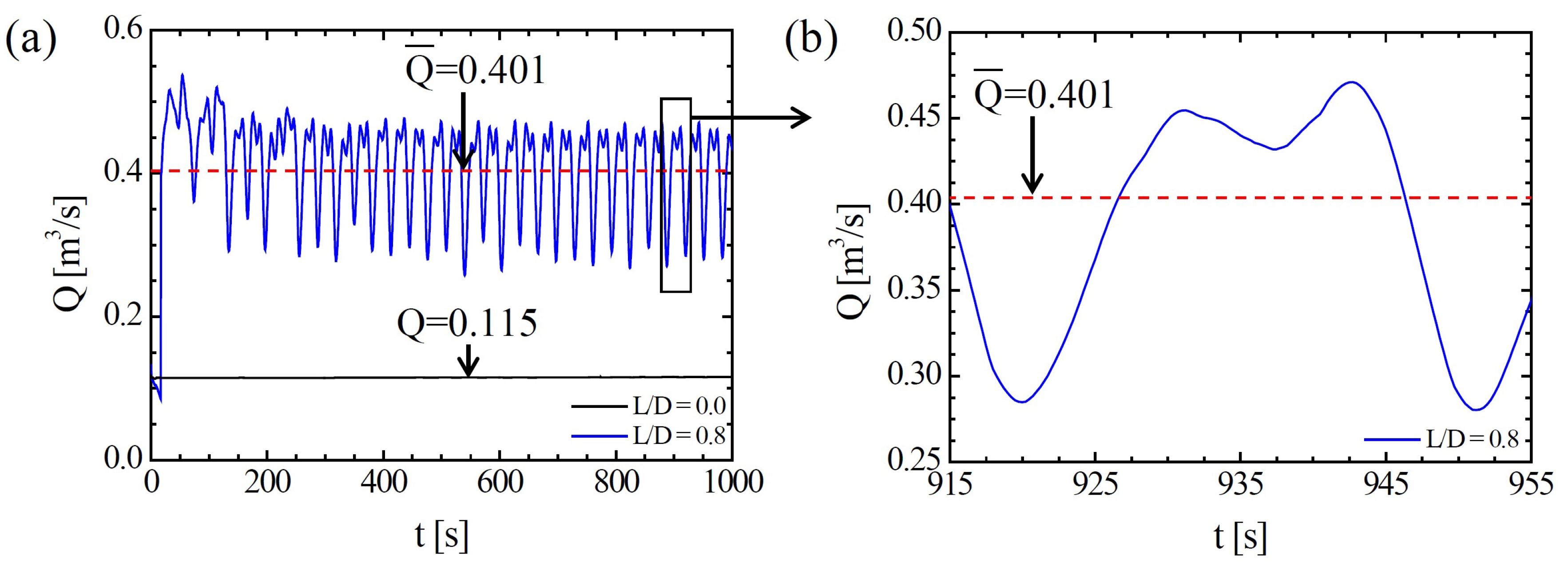

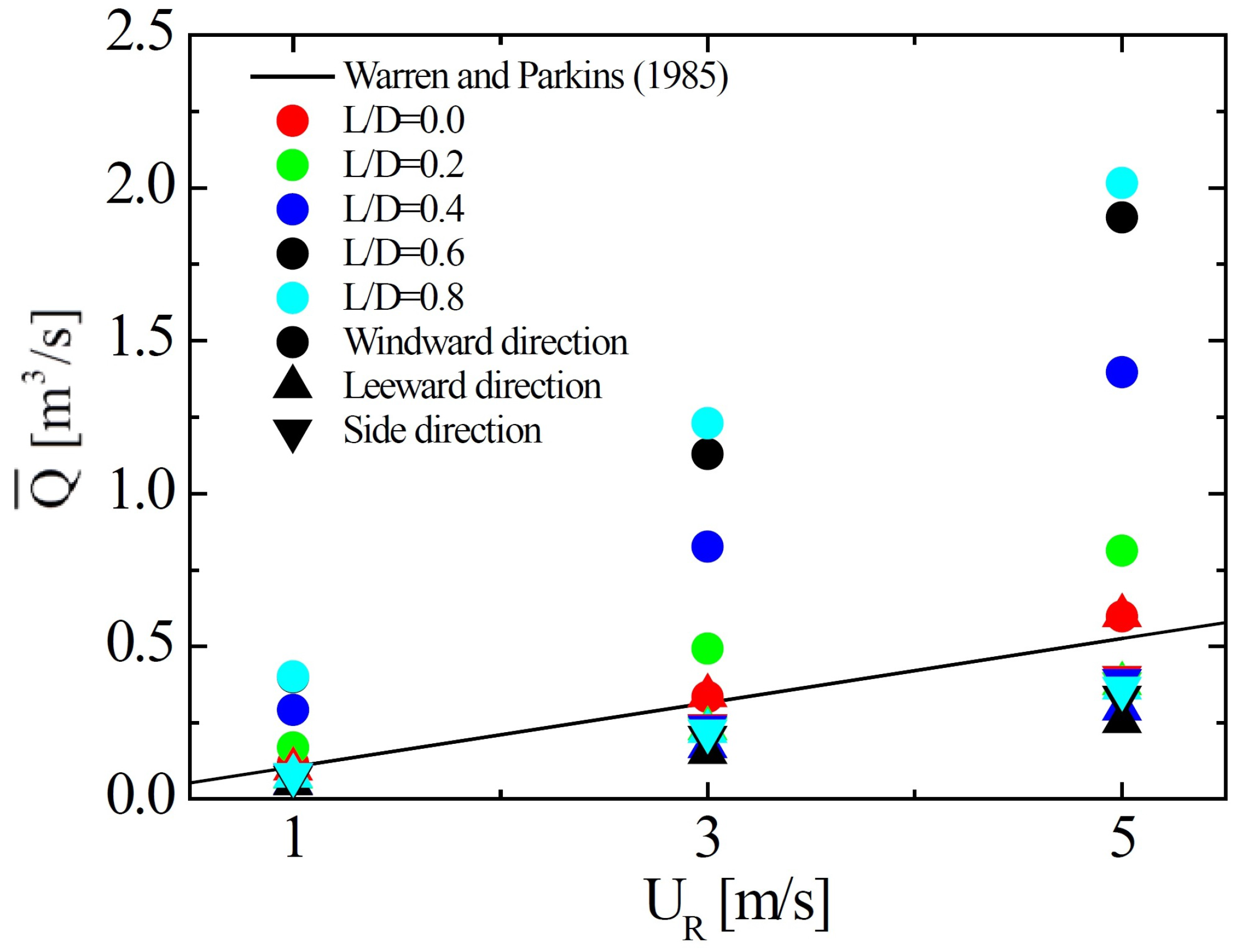
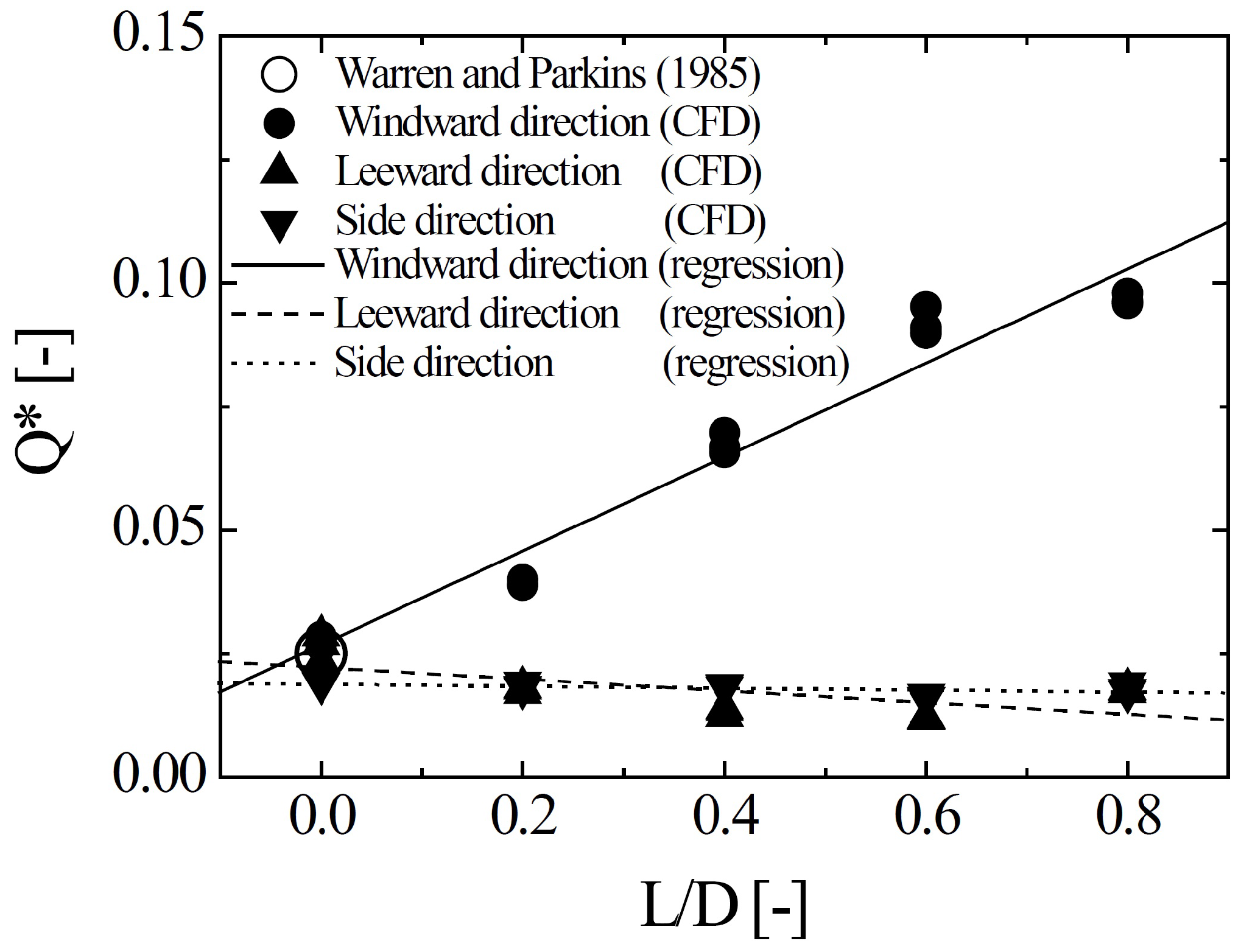
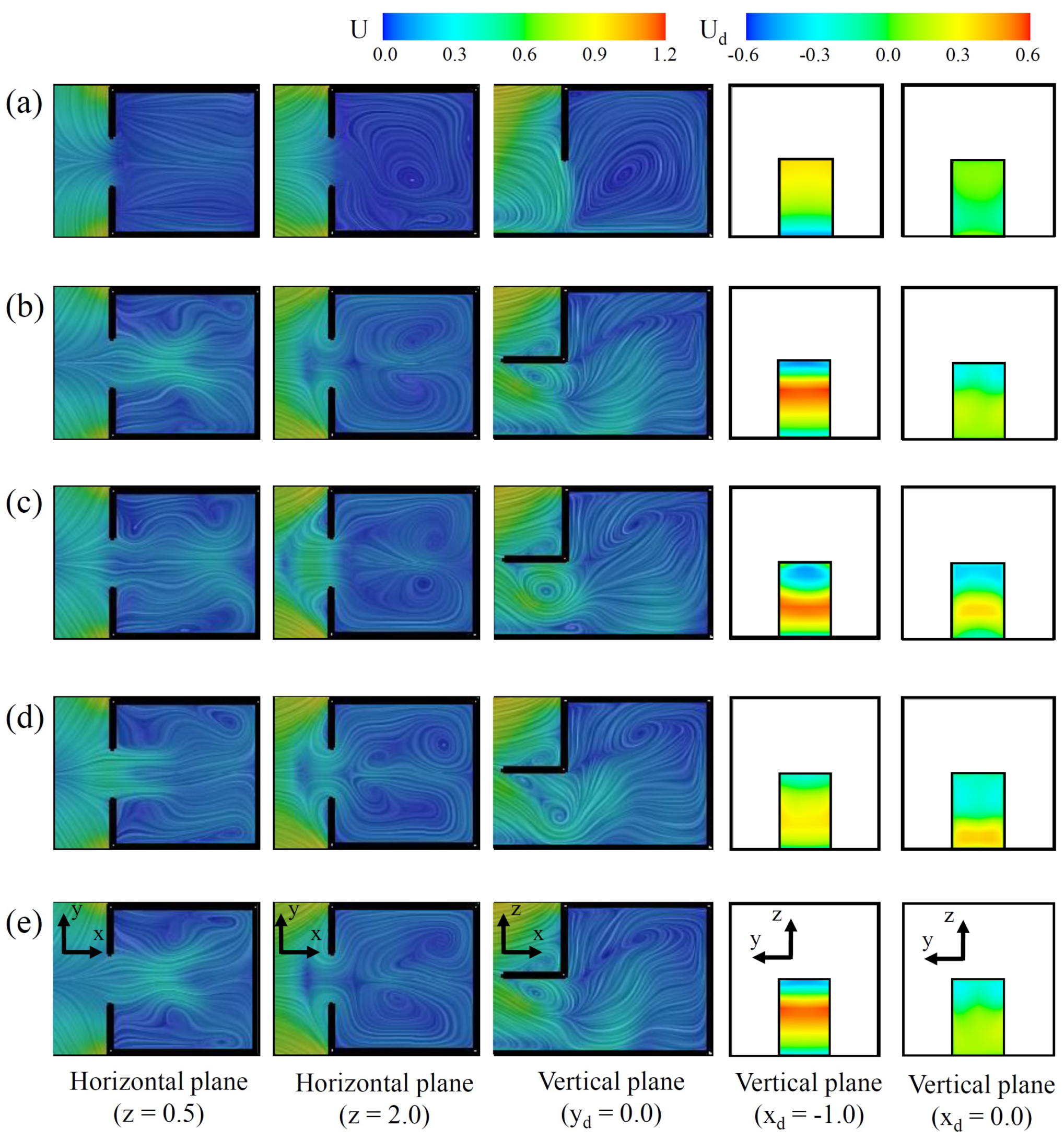
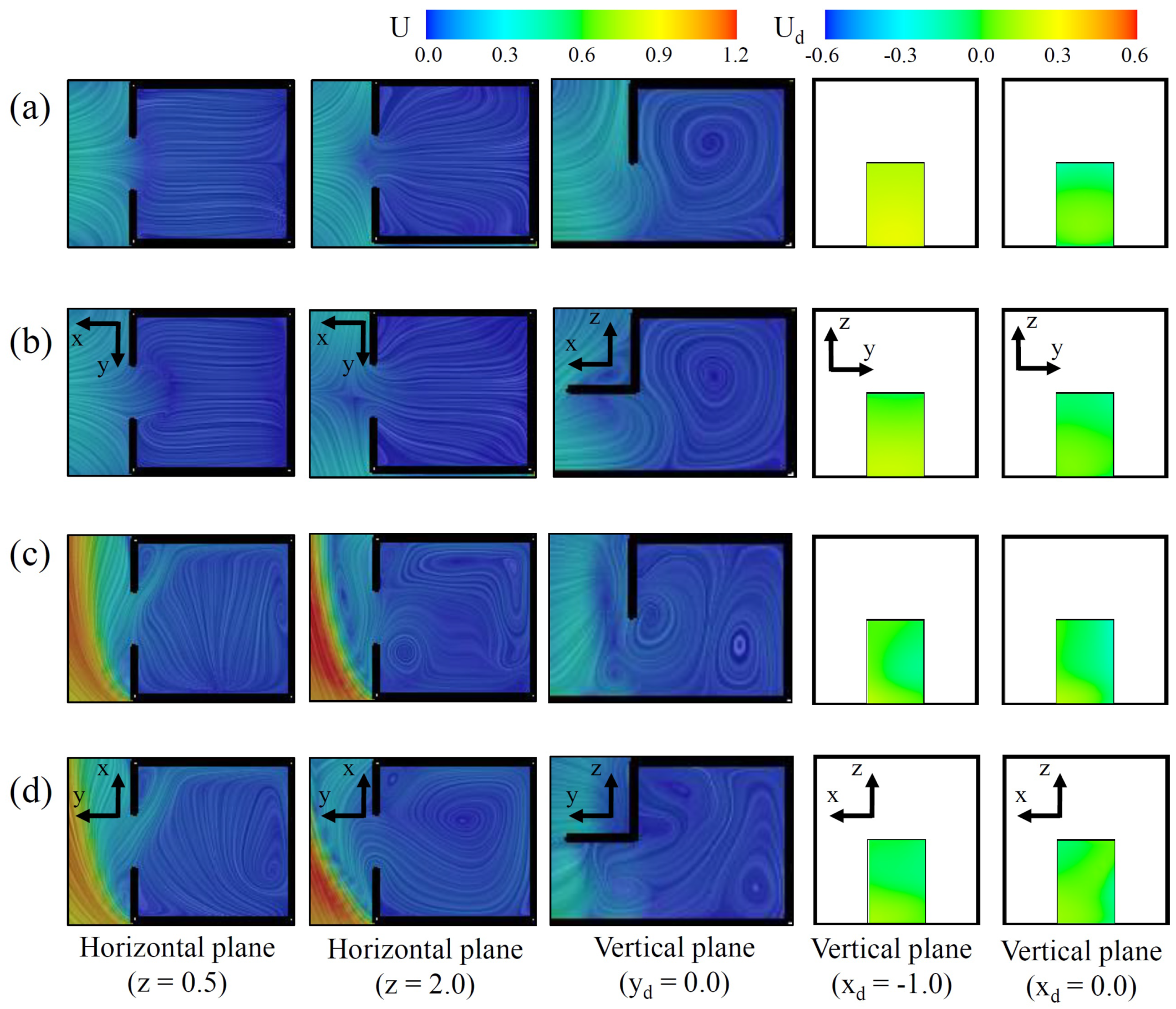
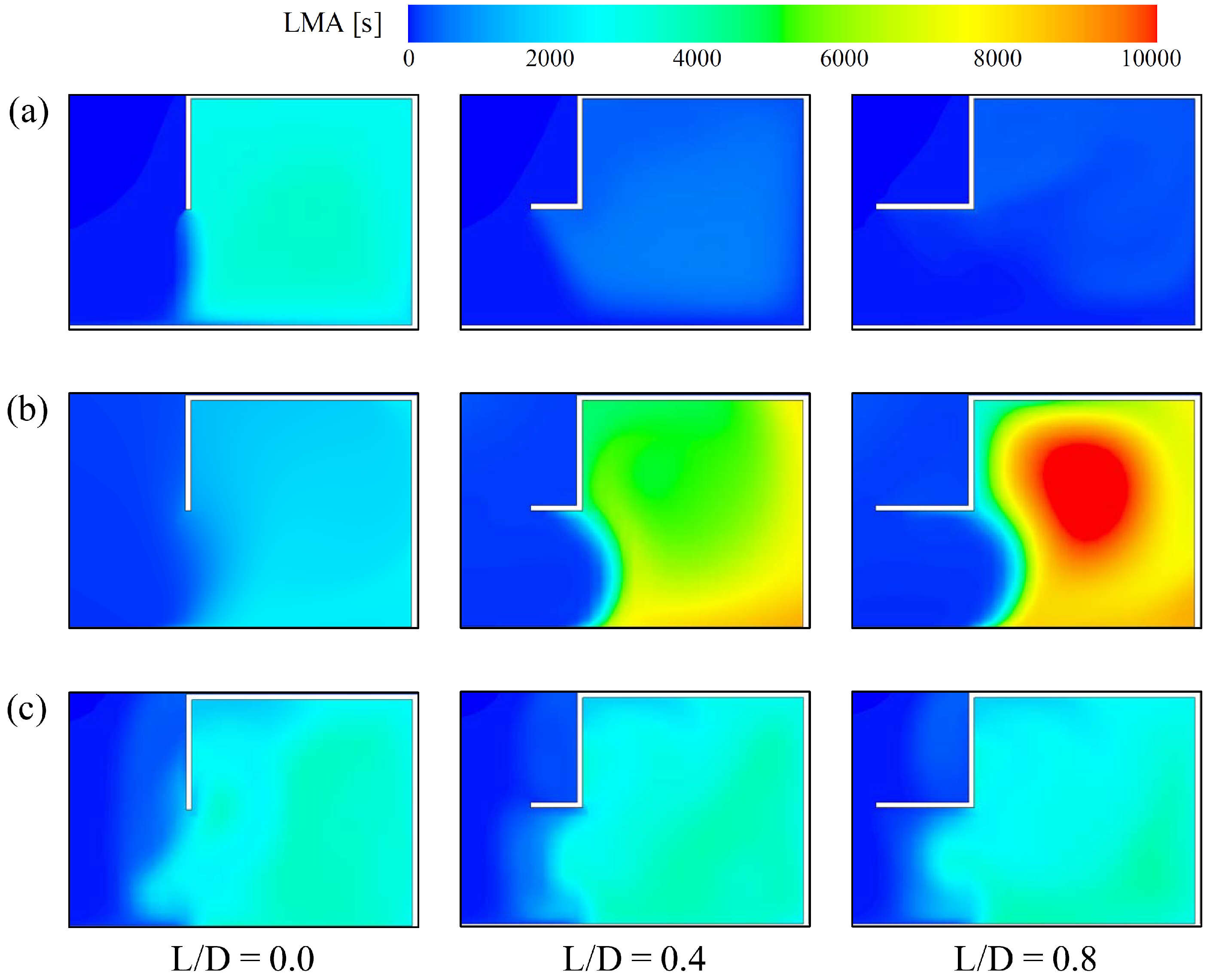
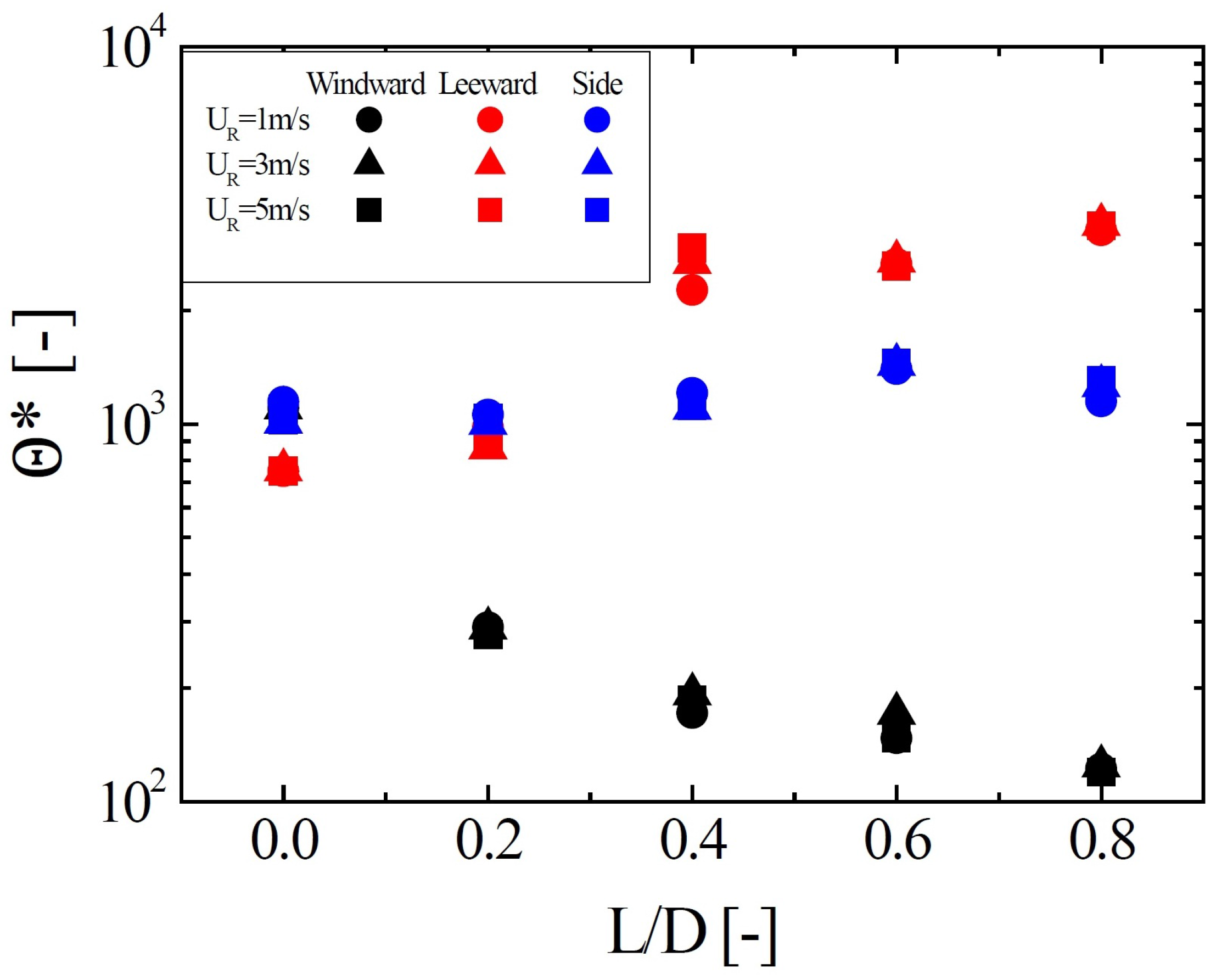
© 2016 by the authors; licensee MDPI, Basel, Switzerland. This article is an open access article distributed under the terms and conditions of the Creative Commons by Attribution (CC-BY) license (http://creativecommons.org/licenses/by/4.0/).
Share and Cite
Park, J.; Choi, J.-I.; Rhee, G.H. Enhanced Single-Sided Ventilation with Overhang in Buildings. Energies 2016, 9, 122. https://doi.org/10.3390/en9030122
Park J, Choi J-I, Rhee GH. Enhanced Single-Sided Ventilation with Overhang in Buildings. Energies. 2016; 9(3):122. https://doi.org/10.3390/en9030122
Chicago/Turabian StylePark, Jinsoo, Jung-Il Choi, and Gwang Hoon Rhee. 2016. "Enhanced Single-Sided Ventilation with Overhang in Buildings" Energies 9, no. 3: 122. https://doi.org/10.3390/en9030122




